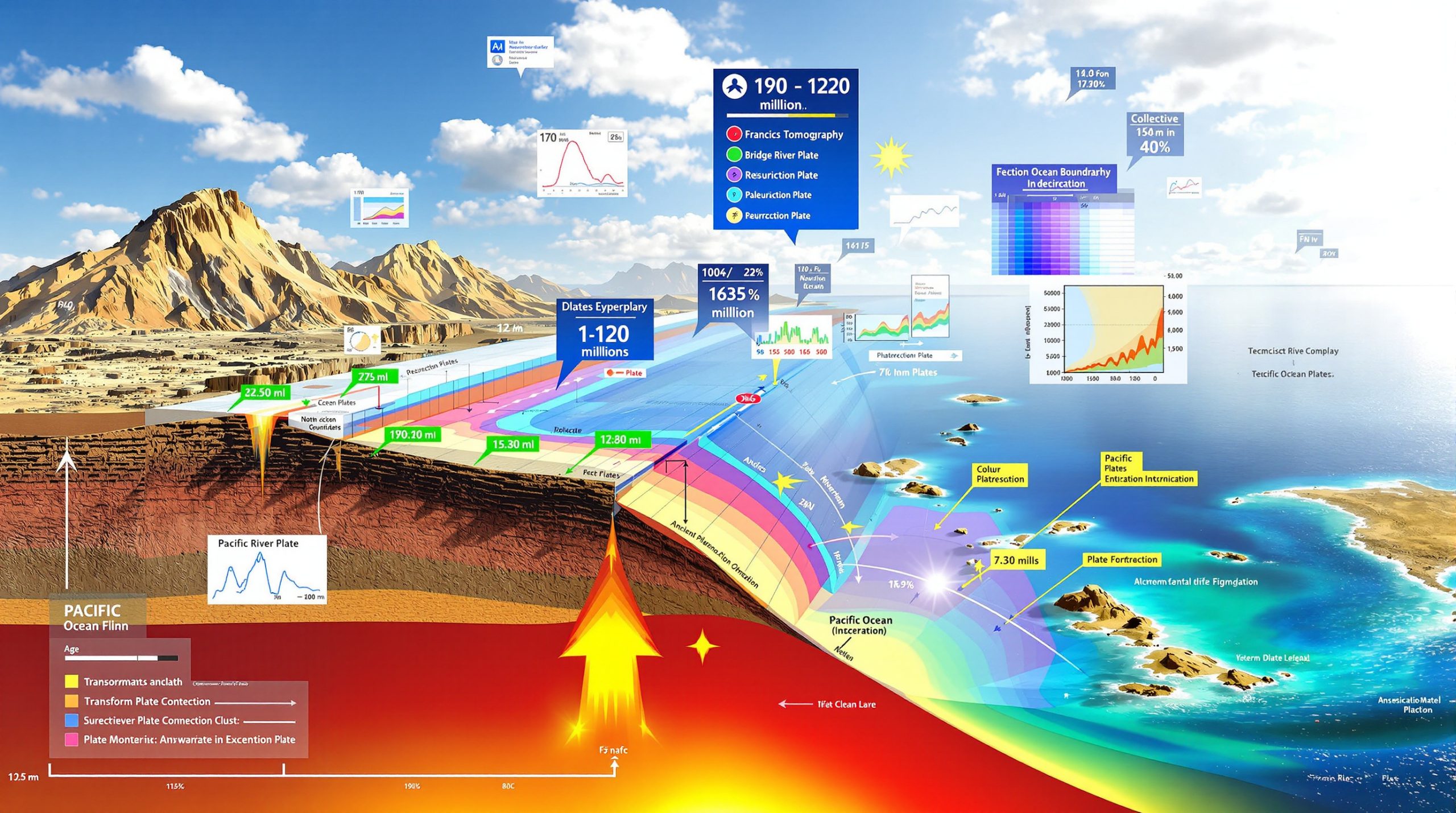What Drives BHP's Share Price Movement?
Understanding what truly moves BHP's share price requires looking beyond the headlines. While quarterly results might capture financial media attention, savvy investors recognize a more fundamental relationship at play.
The Commodity Price Correlation
BHP's share price demonstrates a strong correlation with underlying commodity prices, particularly iron ore price trends. This relationship often overshadows traditional financial metrics like earnings per share or dividend yields that drive valuations in other sectors.
Analysis of BHP's stock movements reveals that price changes frequently anticipate commodity price shifts rather than responding to published financial results. This forward-looking characteristic makes resource stocks particularly challenging to analyze using backward-looking financial statements.
"BHP share price is all about commodity prices tomorrow, not the results last week, last month, or in this case last year," noted financial commentators reviewing recent performance. This perspective highlights why traditional financial analysis often falls short when applied to major mining companies.
Why Historical Results Have Limited Impact
BHP's recent financial report presents a perfect case study in why historical results provide limited insight for investors. Despite headline profit growing 14%, the market largely shrugged, with shares moving just 1% on results day.
This muted reaction stems from a fundamental truth: published results simply confirm what commodity prices have already signaled to the market. By the time financial statements are released, the information has largely been priced in through the commodity price movements that preceded them.
For investors, this creates a paradox – detailed analysis of quarterly reports may offer insights into operational efficiency and management decisions, but these factors typically exert minimal influence on short-term share price movements compared to commodity price forecasts.
The Iron Ore Price Connection
Among the various commodities in BHP's portfolio, iron ore maintains the strongest correlation with share price movements. As Australia's primary iron ore producer, BHP's fortunes remain tightly linked to this crucial steelmaking ingredient.
When examining BHP's historical share price against iron ore price charts, the relationship becomes strikingly apparent. Major rallies and declines in BHP shares frequently mirror similar movements in iron ore futures markets, often with minimal lag time.
This connection explains why China's economic outlook and construction activity forecasts often impact BHP shares more significantly than the company's own announcements. The anticipated demand for steel, driven largely by Chinese infrastructure development, creates a direct through-line to BHP's valuation.
How Do Commodity Prices Influence Resource Companies' Performance?
Resource companies operate in a business environment unlike almost any other sector. While most businesses can influence their destiny through pricing strategies, cost controls, and market positioning, mining giants face a different reality.
The Three Key Commodities for BHP
BHP's financial performance hinges primarily on three key commodities: iron ore, coal, and copper. Each contributes differently to the company's bottom line and responds to distinct market forces.
Recent reporting periods have seen divergent trends across these commodities. Iron ore prices faced downward pressure, coal market transitions weakened considerably, while copper prices strengthened. Understanding these differential movements proves crucial when projecting BHP's future earnings potential.
The company's geographic and commodity diversification provides some buffer against individual market downturns, but cannot fully insulate profitability from major price swings in core products. This fundamental exposure to commodity price volatility remains an inherent characteristic of the business model.
Price Fluctuations and Profit Margins
Mining companies operate with relatively fixed cost structures in the short term. Once infrastructure investments are made and operations established, the cost to extract each additional ton of material remains relatively stable. This creates a leveraged relationship between commodity prices and profit margins.
A 10% movement in underlying commodity prices can trigger significantly larger percentage changes in profitability. This operational leverage explains why BHP's profits can swing dramatically despite relatively consistent production volumes.
Recent results demonstrated this principle clearly. Despite operational continuity, BHP's underlying profit declined 26% when excluding one-time impairments, driven primarily by lower realized prices for key commodities rather than production issues.
Supply and Demand Dynamics in Global Markets
Global commodity markets operate on principles of supply and demand that extend far beyond any single producer's control. Even major players like BHP cannot meaningfully influence market prices through individual actions.
Demand factors include global economic growth rates, infrastructure development plans (particularly in China), technological adoption patterns, and increasingly, climate policy decisions affecting energy transitions. Supply considerations encompass new mine developments, production efficiency improvements, geopolitical mining trends and weather events.
This complex interplay of factors creates a market environment where prices can move dramatically based on forces entirely external to BHP's operational decisions. As one analyst noted, companies "can't do anything about" these broader commodity price movements, highlighting the fundamental challenge of resource company analysis.
Why Was BHP's Recent Profit Down Despite Headline Growth?
BHP's latest financial results present a textbook case of why investors must look beyond headline numbers when evaluating resource companies. The apparent contradiction between reported profit growth and underlying performance deserves closer examination.
Breaking Down the 26% Underlying Profit Decline
While headline numbers showed a 14% profit increase, a deeper analysis reveals a different story. When one-time items and impairments are excluded, BHP's underlying profit actually declined by 26% compared to the previous period.
This significant drop in core profitability stemmed primarily from weaker realized prices for iron ore and coal, which constitute substantial portions of BHP's revenue mix. Despite operational efficiency improvements and production targets largely being met, the company couldn't overcome the fundamental impact of lower commodity prices.
The divergence between headline and underlying figures highlights the importance of examining "clean" earnings numbers that better reflect ongoing business performance rather than accounting adjustments that may distort period-to-period comparisons.
Impact of Impairments on Financial Reporting
Impairment charges represent accounting adjustments that write down the value of assets when their carrying value exceeds expected future returns. These non-cash items can significantly impact reported profits without affecting actual cash flows.
In BHP's case, the reversal of previous impairments created a substantial positive impact on headline numbers that masked the underlying earnings weakness. While these adjustments follow required accounting standards, they often cloud rather than clarify the company's true operational performance.
Investors focused solely on press release headlines might have missed this crucial distinction, potentially misinterpreting BHP's current trajectory and profit-generating capacity in the current commodity price environment.
Dividend Reduction Context
Perhaps the clearest signal of BHP's true financial position came through its dividend announcement, described by market observers as the "smallest dividend in eight years." This tangible reduction in shareholder returns reflects management's assessment of current business conditions more honestly than the headline profit figure.
Dividend policies at major resource companies typically reflect both current profitability and management's outlook on future commodity prices. The significant reduction suggests both acknowledgment of weaker current earnings and potentially cautious views on near-term price recovery.
For income-focused investors, this dividend cut represents a material change that contradicts the superficially positive headline profit growth, underscoring the need to examine resource company results comprehensively rather than selectively.
How Should Investors Approach Resource Stock Analysis?
Resource company investments demand a fundamentally different analytical approach than most other sectors. Traditional methods focused on historical financial metrics often prove inadequate when applied to mining giants like BHP.
The Limitations of Traditional Financial Analysis
Standard financial analysis focuses heavily on historical results, trend analysis, and ratio comparisons. While these approaches provide valuable insights for most companies, they fail to capture the primary value drivers for resource stocks.
When evaluating BHP, traditional metrics like price-to-earnings ratios, earnings growth rates, and even return on capital employed can mislead investors because they reflect past commodity price environments rather than future conditions. As one market commentator noted, "Research on resources companies is almost pointless because unless you can get the future of commodity prices right, you're not going to get the share price right."
This fundamental disconnect between backward-looking financial analysis and forward-looking share price movements explains why even thorough examination of quarterly reports may provide limited investment edge. Past results are described as "pretty irrelevant really" when predicting future share price movements.
Forward-Looking Metrics That Matter
Successful resource company investors typically focus on leading indicators rather than lagging financial results. Key forward-looking metrics include:
- Chinese construction and manufacturing PMI data
- Global steel production forecasts
- Infrastructure spending announcements in key markets
- Supply disruption risks in major producing regions
- Production cost curve positioning versus competitors
- Inventory levels at major ports and storage facilities
These indicators often provide earlier signals about future commodity price directions than financial statements, which merely confirm what commodity markets have already revealed.
Investors should also closely monitor BHP's unit production costs relative to prevailing commodity prices. This spread determines profit margins and can indicate whether specific operations remain economically viable at current price levels.
Commodity Price Forecasting Approaches
Since future commodity prices represent the most critical factor in BHP's valuation, developing a coherent forecasting approach becomes essential. While perfect prediction remains impossible, several methodologies can improve decision-making:
-
Supply-side analysis: Evaluating production capacity, development pipelines, and potential disruptions across global mining operations.
-
Demand modeling: Tracking manufacturing activity, construction trends, and policy developments in major consuming countries, particularly China.
-
Technical analysis: Identifying price patterns, support/resistance levels, and momentum indicators in commodity futures markets.
-
Cost curve positioning: Understanding where BHP's production costs sit relative to global competitors can indicate profit resilience during price downturns.
-
Sentiment indicators: Monitoring positioning data from futures markets and analyst consensus forecasts to identify potential contrarian opportunities.
Rather than seeking perfect predictions, successful resource investors often develop probability-weighted scenarios for commodity price movements and position accordingly, recognizing the inherent uncertainty in these markets.
What Commodity Price Trends Are Shaping BHP's Outlook?
BHP's future performance remains inextricably linked to commodity price trajectories. Understanding the supply-demand dynamics and price outlook for key commodities provides crucial context for investment decisions.
Iron Ore Market Projections
Iron ore continues to represent BHP's most significant profit driver, making its price outlook particularly consequential. Several factors currently influence the iron ore market:
The pace of Chinese infrastructure spending remains the dominant demand factor, with recent economic stimulus measures providing some support despite broader property sector weakness. Analysts debate whether these stimulus efforts will sustain steel demand over the medium term.
On the supply side, production from major miners has remained relatively stable, while Brazilian output continues its gradual recovery from earlier disruptions. New projects entering production over the next 24-36 months could potentially create oversupply conditions if demand growth falters.
Quality differentials between high-grade and lower-grade ores have widened, benefiting BHP's relatively high-quality production amid growing environmental pressures on Chinese steelmakers. This premium for higher-grade material may provide some buffer against broader price weakness.
Coal Industry Transitions
BHP's coal exposure spans both metallurgical coal (used in steelmaking) and thermal coal (used in electricity generation), with each facing distinct market dynamics:
Metallurgical coal markets remain tied to global steel production trends, with prices having retreated from earlier peaks but maintaining relatively stronger fundamentals than thermal coal. BHP's high-quality metallurgical coal assets position it favorably within this segment.
Thermal coal faces mounting long-term challenges from energy transition policies, despite recent price volatility driven by energy security concerns. BHP has strategically reduced its thermal coal exposure, recognizing the structural headwinds facing this commodity.
The divergent outlook between these coal varieties highlights the importance of understanding BHP's specific production mix rather than viewing "coal" as a monolithic commodity within the portfolio.
Copper Demand Forecasts
Copper represents BHP's most promising long-term growth opportunity, with prices strengthening against a backdrop of energy transition demands and supply constraints:
Electrification trends across transportation, renewable energy, and grid infrastructure support robust long-term demand projections for copper. Electric vehicles require approximately four times more copper than traditional internal combustion vehicles, creating structural demand growth.
Supply development challenges persist across the copper mining industry, with declining ore grades, water constraints, and permitting difficulties limiting new project development. These constraints suggest potential for sustained price support despite economic growth uncertainties.
BHP has strategically increased its copper exposure, recognizing these favorable fundamentals. Recent acquisitions and development projects underscore management's commitment to growing this segment as part of its portfolio evolution strategy. The latest copper price prediction further supports this strategic direction.
How Does BHP Navigate Commodity Price Volatility?
Operating in inherently cyclical markets requires sophisticated strategies to manage volatility. BHP has developed various approaches to navigate commodity price fluctuations while maintaining financial stability.
Diversification Strategies
Portfolio diversification represents BHP's first line of defense against commodity-specific downturns. By maintaining exposure across multiple commodities with different demand drivers and price cycles, the company reduces its vulnerability to weakness in any single market.
Recent portfolio decisions reflect this strategic approach. The company has:
- Increased copper exposure through development projects and acquisitions
- Maintained core iron ore operations while focusing on premium products
- Reduced thermal coal exposure while preserving metallurgical coal assets
- Expanded into potash through the Jansen project, adding agricultural exposure
This diversified approach allows different segments to potentially offset each other during market fluctuations, though iron ore remains the dominant profit driver in the near term.
Operational Efficiency Measures
When commodity prices decline, operational efficiency becomes crucial to maintaining profitability. BHP has implemented several initiatives to control costs and improve productivity:
- Automation technologies across mining operations, including autonomous trucks and remote operations centers
- Standardized maintenance procedures to reduce equipment downtime
- Energy efficiency improvements to reduce operating costs
- Workforce optimization and productivity initiatives
These operational improvements have progressively lowered BHP's position on the global cost curve for key commodities, enabling the company to generate cash flow even during price downturns. While these measures cannot fully offset major price declines, they provide important margin protection during challenging market conditions.
Capital Allocation Priorities
BHP's capital allocation framework provides another mechanism for managing commodity price volatility. The company employs a structured approach that adjusts priorities based on market conditions:
During strong pricing environments, the framework balances:
- Maintaining a strong balance sheet with conservative debt levels
- Investing in high-return growth projects with disciplined evaluation criteria
- Returning excess cash to shareholders through dividends and buybacks
When prices weaken, priorities shift toward:
- Preserving financial strength by reducing discretionary spending
- Focusing capital expenditure on essential maintenance and highest-return projects
- Adjusting shareholder returns through the company's payout ratio policy
This disciplined approach to capital allocation helps BHP maintain financial stability throughout commodity price cycles while avoiding the value-destructive expansions that have historically plagued the mining industry during boom periods.
What Can We Learn From BHP's Latest Financial Results?
Beyond the headline numbers, BHP's recent results contain valuable insights about both company-specific factors and broader industry trends that inform investment analysis.
Key Performance Indicators Beyond Headlines
Several operational metrics deserve attention despite receiving less coverage than headline profit figures:
Production volumes across key commodities remained relatively stable, indicating operational continuity despite external challenges. This consistency demonstrates effective operational management even as commodity prices fluctuated significantly.
Unit cost performance showed mixed results, with some operations achieving cost reductions while others experienced inflationary pressures, particularly in energy and labor inputs. These cost trends warrant monitoring as potential margin pressures if commodity prices remain subdued.
Capital expenditure patterns revealed ongoing commitment to maintenance spending while taking a measured approach to growth projects. This balanced capital allocation indicates disciplined management amid uncertain market conditions.
Free cash flow generation, though reduced from previous periods, remained positive despite weaker commodity prices. This resilience highlights BHP's relatively strong position on the global cost curve for its major commodities.
Comparative Analysis With Industry Peers
Benchmarking BHP's performance against major competitors provides contextual understanding:
Relative to peers, BHP maintained stronger margins in iron ore operations, reflecting quality advantages and operational efficiency. This differential mining company performance highlights the importance of asset quality within the broader industry context.
Gearing ratios remained among the most conservative in the sector, providing BHP greater flexibility to weather prolonged price weakness or pursue opportunistic acquisitions compared to more leveraged competitors.
Portfolio diversification levels position BHP between pure-play miners focused on single commodities and more widely diversified competitors. This middle-ground approach offers some stability benefits while maintaining meaningful exposure to specific commodity upside potential.
Management's Forward Guidance
Management commentary provided several forward-looking insights that extend beyond numerical forecasts:
Capital allocation discipline remained a consistent theme, with executives emphasizing return criteria for new investments rather than production growth targets. This approach suggests continued focus on value over volume across operations.
Strategic priorities reinforced copper growth ambitions while maintaining iron ore as the core profit generator. This balanced approach acknowledges both near-term cash flow realities and long-term transition opportunities.
Risk management discussions highlighted increasing attention to climate policy impacts, water scarcity challenges, and community relations as factors potentially affecting future operational performance beyond traditional commodity price considerations.
FAQ: Understanding Resource Company Investments
How Closely Does BHP's Share Price Track Iron Ore Prices?
BHP's share price demonstrates a strong but imperfect correlation with iron ore prices, reflecting the commodity's dominant contribution to company profits. Statistical analysis shows correlation coefficients typically ranging between 0.7-0.8 over multi-year periods, indicating a robust but not absolute relationship.
Several factors explain why the correlation isn't perfect:
- BHP's diversified portfolio means other commodities like copper and coal also influence overall profitability
- Company-specific factors including operational efficiency, growth projects, and management decisions create differentiation
- Market sentiment and broader equity trends can temporarily override commodity price relationships
Investors should view iron ore prices as the primary but not exclusive driver of BHP's valuation, with the relationship strongest during periods of significant iron ore price movements.
Why Do Analyst Forecasts Often Miss the Mark for Mining Stocks?
Resource company analyst forecasts face unique challenges that frequently lead to significant estimation errors. These challenges include:
Commodity price prediction difficulties represent the primary forecasting challenge. Even small deviations from projected prices can dramatically impact earnings forecasts due to the leveraged relationship between prices and mining company profits.
Operational disruptions including weather events, equipment failures, labor disputes, and regulatory interventions can significantly impact production volumes, yet remain inherently unpredictable in timing and duration.
Currency fluctuations add another layer of complexity since resource companies typically sell commodities in US dollars while incurring costs in local currencies, creating another variable that analysts must forecast accurately.
These compounding uncertainties explain why consensus earnings forecasts for mining companies typically show higher error rates than those for more stable sectors like consumer staples or utilities.
What Economic Indicators Best Predict Commodity Price Movements?
Investors seeking early signals about potential commodity price directions should monitor several key economic indicators:
Chinese manufacturing and construction metrics provide crucial demand signals, particularly the official and Caixin Manufacturing PMI data, fixed asset investment figures, and property market statistics. These indicators offer insights into likely steel demand, which directly impacts iron ore consumption.
Global industrial production trends, particularly in steel-intensive sectors like automotive, machinery, and construction, help forecast broader metals demand beyond China's influence.
Inventory levels at major ports and warehouses can signal developing supply-demand imbalances before they manifest in price movements. Rising inventory levels often precede price weakness, while rapidly declining inventories may signal tight market conditions.
Monetary policy decisions, particularly from major central banks, influence both economic activity levels and investor flows into commodity markets. Easing cycles typically support commodity prices through both demand stimulation and investment flows.
By tracking these leading indicators rather than focusing exclusively on BHP's historical results, investors can develop more forward-looking perspectives on likely commodity price trends and their potential impact on future profitability.
Ready to Stay Ahead of Major Mineral Discoveries?
Don't miss the next market-moving mineral discovery on the ASX – Discovery Alert's proprietary Discovery IQ model delivers instant alerts on significant mineral announcements, turning complex data into actionable investment opportunities. Explore how major discoveries can generate substantial returns by visiting Discovery Alert's dedicated discoveries page and begin your 30-day free trial today.




